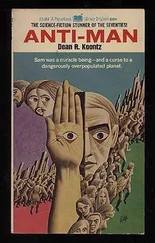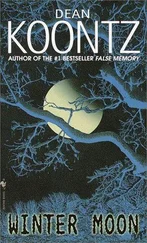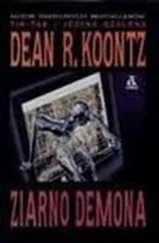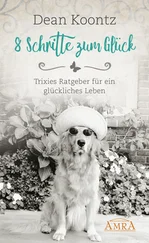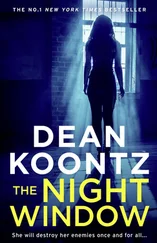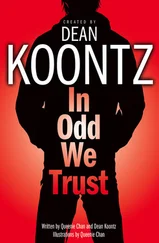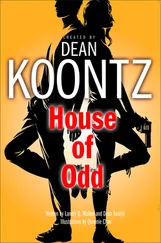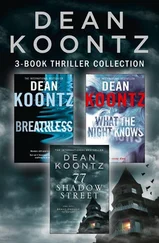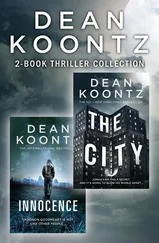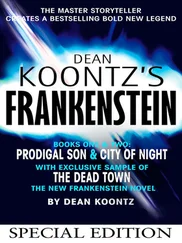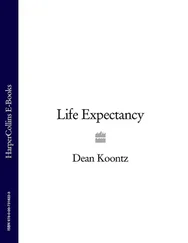The other novel-length piece included here is "Chase." A version of this story was published by Random House, under the pen name K. R. Dwyer, when I was just a puppy. As Dwyer, I also wrote Shattered , which has been available under my real name for years. When I reread "Chase" for possible inclusion in this collection, I blushed and groaned nonstop because it had "beginner" written all over it — also "meandering" and "sloppy" — although it had been well reviewed in many places at the time of publication. The character of Ben Chase still intrigued me, however, and the basic story still had power. So, before packing it up and sending it off to Warner Books, I revised it. The revision resulted in the cutting of at least twenty-five percent of the original text, the addition of new scenes, and a thorough cleanup of the prose and dialogue. As always happens when I revisit a work from early in my career, I was tempted to change the entire intent of the story, the style, the characters, the plot — and turn it into a piece that would read exactly as if I had written it today. That isn't the point of collecting previous work, of course; a book like Strange Highways is supposed to show the author's range of interests and various approaches over the years. Consequently, I restrained myself. "Chase" is straight psychological suspense, with no hint of the supernatural; it's also character driven, relying almost entirely on the character of Benjamin Chase for its effect, so if he doesn't intrigue you, I'm in deep trouble. One warning: This is a fairly dark piece, and some of Ben Chase's moral choices may startle you, Gentle Reader — though they're virtually the only ones he could have made.
I won't write notes on each story in Strange Highways. If you want to be bored by literary analysis, you can always take a college course. A few pieces, however, require a word or two:
"Kittens" is the first short story that I ever sold. It was written while I was in college, won a prize in an annual fiction competition for college students sponsored by the Atlantic Monthly , and then earned me fifty dollars when it was bought by a magazine called Readers & Writers. As I recall, Readers & Writers went belly up soon thereafter. Over the years, I have had books released by the following publishers that also went out of business: Atheneum, Dial Press, Bobbs-Merrill, J. P. Lippincott, Lancer, and Paperback Library. I informed Warner Books of this unsettling fact, but brave souls that they are, they accepted Strange Highways with enthusiasm.
"Bruno," a science-fiction parody of a private-eye story (!), is just meant to be a hoot. I revised and updated it from the original text and had a darn good time with it. As you know, virtually all my novels since Watchers have included substantial comic elements. Since most of the stories in this book do not have comic elements, I was itching to balance the tone with some flat-out silliness, and "Bruno" seemed to do the trick.
"Twilight of the Dawn" is my personal favorite of all the short fiction that I have written — and the piece that has generated the most mail in spite of appearing in a relatively obscure anthology. I think it appeals to people because it is about faith and hope — but is not in the least sentimental. The narrator is a cold fish for most of the story, and when he is eventually humanized through personal suffering and tragedy, his grudging admission that life may have meaning is effective. At least it was for me when I was writing the piece.
Finally, "Trapped" originally appeared in an anthology titled Stalkers , with an introduction that some readers say they enjoyed a great deal. So here's what I said about it then:
A major national magazine, which shall remain nameless, asked my agent if I would be willing to write a two-part novella dealing with genetic engineering, scary but not too bloody, incorporating a few of the elements of Watchers (my novel that dealt with the same subject). They offered excellent pay; furthermore, the appearance of the piece in two successive issues would reach many millions of readers, providing considerable exposure. I'd long had the idea for "Trapped." In fact, it predated Watchers , and after writing that novel, I figured that I'd never do the novella because of the similarities. Now someone wanted the piece precisely because of those similarities.
Well, hey, kismet. I seemed destined to write the story. It would be a nice break between long novels. Nothing could be easier, huh?
Every writer is an optimist at heart. Even if his work trades in cynicism and despair, even if he is genuinely weary of the world and cold in his soul, a writer is always sure that the end of the rainbow will inevitably be found on the publication date of his next novel. "Life is crap," he will say, and seem to mean it, and a moment later will be caught dreamily ruminating on his pending elevation by critics to the pantheon of American writers and to the top of the New York Times best-seller list.
The aforementioned magazine had certain requirements for the novella. It had to be between twenty-two and twenty-three thousand words. It had to divide naturally into two parts, slightly past the midpoint. No problem. I set to work, and in time I delivered to specifications, without having to strain or contort the tale.
The editors loved the piece. Couldn't wait to publish it. They virtually pinched my cheeks with pleasure, the way your grandma does when she hears that you received a good report card and that you are not into satanic rock 'n' roll or human sacrifices, the way that other eight-year-olds are.
Then a few weeks passed, and they came back and said, "Listen, we like this so much that we don't want the impact of it to be diluted by spreading it over two issues. It should appear in a single issue. But we don't have room for quite this much fiction in one issue, so you'll have to cut it." Cut it? How much? "In half."
Having been commissioned to produce a two-parter of a certain length, I might have been justified if I had responded to this suggestion with anger and a sullen refusal to discuss the matter further. Instead, I banged my head against the top of my desk, as hard as I could, for… oh, for about half an hour. Maybe forty minutes. Well, maybe even forty-five minutes, but surely no longer. Then, slightly dazed and with oak splinters from the desk embedded in my forehead, I called my agent and suggested an alternative. If I put in another week or so on the piece, with much effort, I might be able to pare it down as far as eighteen to nineteen thousand words, but that would be all I could do if I was to hold fast to the story values that made me want to write "Trapped" in the first place.
The magazine editors considered my proposal and decided that if the story could be printed in slightly smaller type than they usually employed, the new length would fit within their space limitations. I sat down at my word processor again. A week later the work was done — but I had even more oak splinters in my head, and the top of the desk looked like hell.
When the new version was finished — and just as it was being submitted — the editors decided that eighteen to nineteen thousand words were still too many, that the solution offered by a smaller than usual type size was too problematic, and that about four or five thousand more words would have to come out. "Not to worry," I was assured, "we'll cut it for you."
Fifteen minutes later, my desk collapsed from the additional pounding (and to this day, it is necessary for me to apply lemon-oil polish to my forehead once a week, because the ratio of wood content to flesh is now so high that the upper portion of my facial structure is classified as furniture by federal law).
Читать дальше

